As a food enthusiast and a health-conscious individual, I’ve always been on the lookout for nutrient-rich ingredients to incorporate into my meals.
One day, while exploring the produce aisle, I stumbled upon a variety of mushrooms.
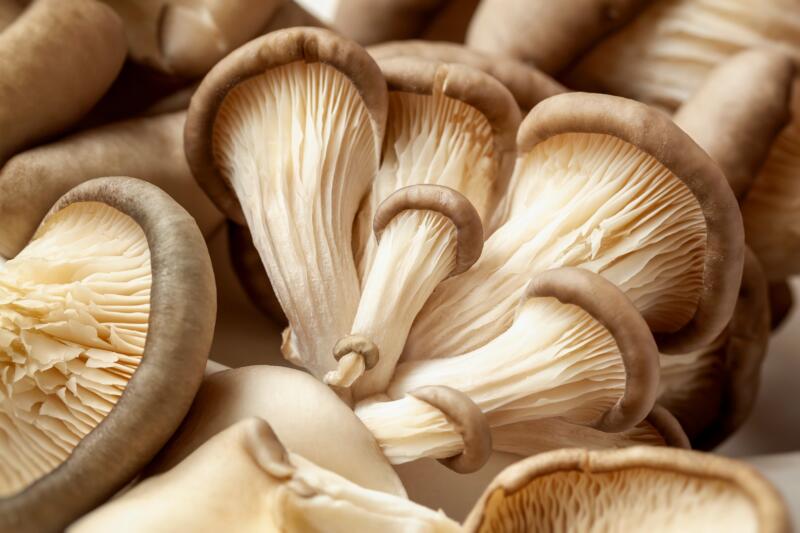
Intrigued, I decided to do some research and was pleasantly surprised to discover the world of highest protein mushrooms.
These culinary gems not only add a unique umami taste, a savory and deep flavor often described as the fifth taste but also pack a punch when it comes to protein content.
Who knew that these humble fungi could be such a powerhouse of nutrition?
In this article:
Overview of Protein Content in Mushrooms
Mushrooms, the culinary delight of many kitchens, are not just known for their umami flavor and textures but also for their nutritional value.
Although they may not top the list of protein-rich foods, they certainly add to our daily protein consumption.
This contribution from mushrooms can be particularly valuable for vegetarians and vegans who need to obtain protein from non-animal sources.
Keep in mind that every bit adds up in meeting our protein requirements.
The British Nutrition Foundation suggests a daily protein intake of 50g for adults. Nonetheless, it’s vital to include diverse protein sources in your meals to guarantee a comprehensive range of essential amino acids.
Common Types of High Protein Mushrooms
Let’s explore some of these protein-rich mushrooms.
1. Maitake (Grifola frondosa)
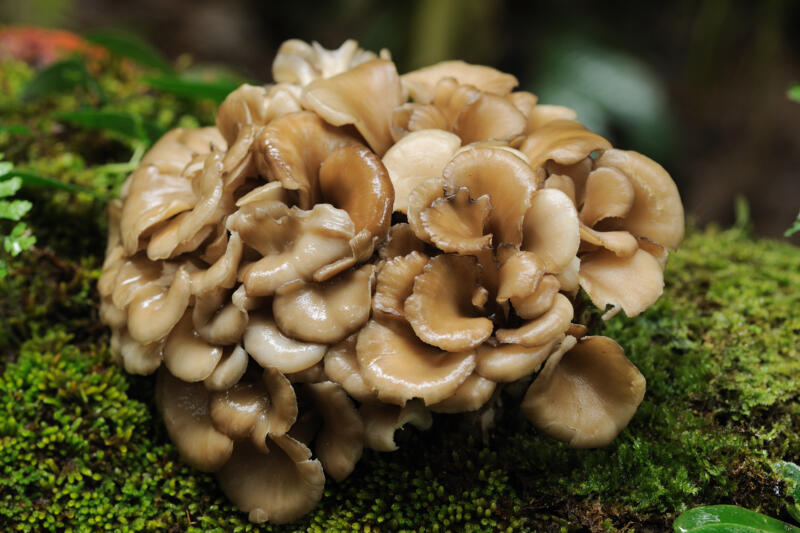
Maitake mushrooms, often referred to as “hen of the woods,” are favored in Chinese and Japanese cuisines.
These mushrooms boast a good protein content of approximately 1.9g per 100 grams serving, making them a beneficial addition to any diet.
Maitake are known for its earthy aroma, delicate taste, unique texture, and health benefits.
They are rich in bioactive compounds, which have immune-protecting and antitumor properties.
Additionally, Maitake mushrooms aid in reducing blood glucose levels and serve as a valuable source of Vitamin D, a nutrient frequently deficient in contemporary diets.
2. White Button (Agaricus bisporus)
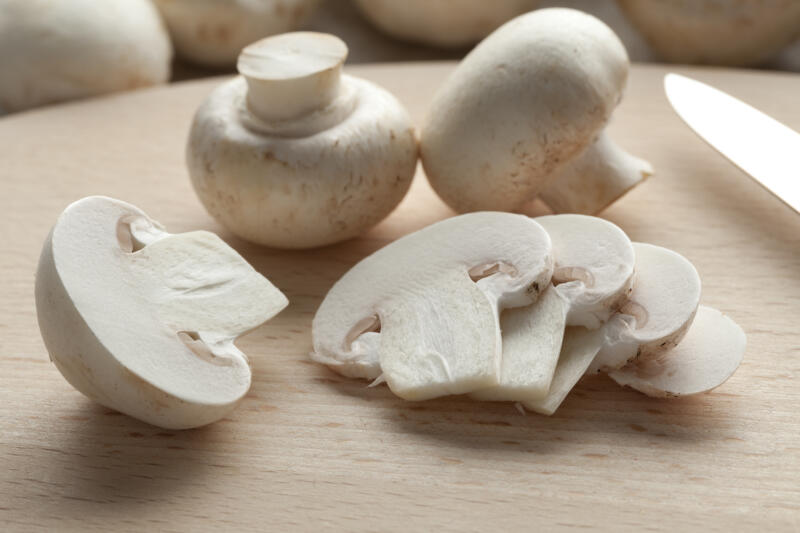
Next on our list are white button mushrooms, the most widely cultivated mushrooms worldwide.
Their mild flavor and versatility have made them a staple in many kitchens.
A 3.5oz (100g) serving of these mushrooms provides 3g of protein.
These mushrooms are also a rich source of vitamin B and copper, making them a nutritious addition to any meal.
Interestingly, white buttons are actually the initial stage of development of Portobello mushrooms.
This means that the familiar white button mushrooms we often see in grocery stores are essentially young Portobellos that have not yet matured to their final stage.
3. Oyster (Pleurotus ostreatus)
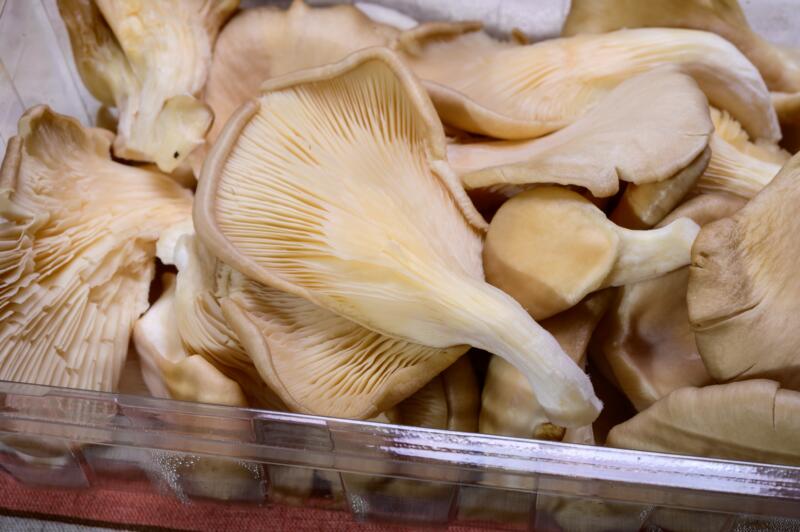
Oyster mushrooms, known as well as pearl oyster or tree oyster mushrooms, are another worldwide popular protein-rich variety.
Whether you’re stir-frying, grilling, or adding them to a soup, oyster mushrooms can adapt to a variety of dishes while boosting your protein intake.
For every 3.5oz (100g) serving portion, they provide a substantial 2.9 grams of protein, contributing to a balanced diet.
Packed with vitamins, minerals, and antioxidants, they aid the body in neutralizing detrimental free radicals.
However, it’s important to only consume mushrooms from a reliable source, as some types can be toxic.
4. Portobello (Agaricus bisporus)
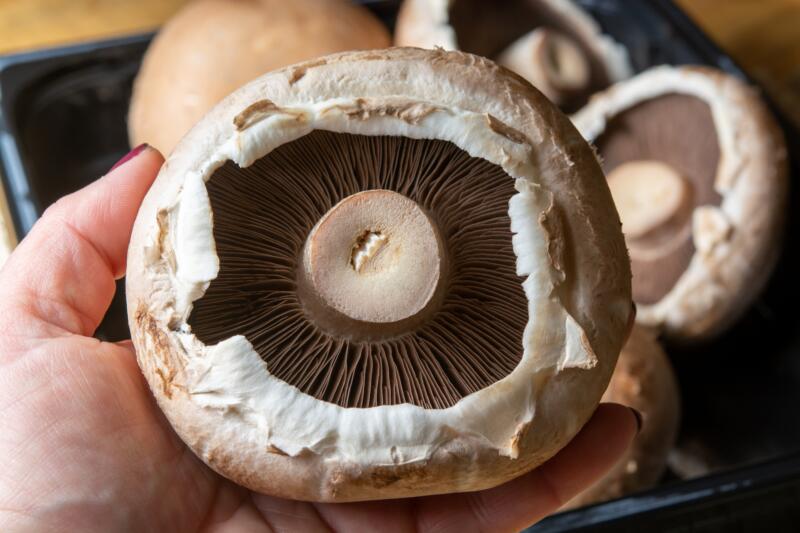
Portobello mushrooms are a high protein option that brings a lot to the table.
Their large size and meaty texture make them a versatile choice in cooking, often used as a satisfying substitute for meat in various dishes.
A 3.5oz (100g) serving of Portobello mushrooms provides 2.1g of protein.
But that’s not all – they’re also a good source of niacin, vitamin B5, copper, andselenium, making them a nutrient-packed addition to your meals.
5. Shiitake (Lentinula edodes)
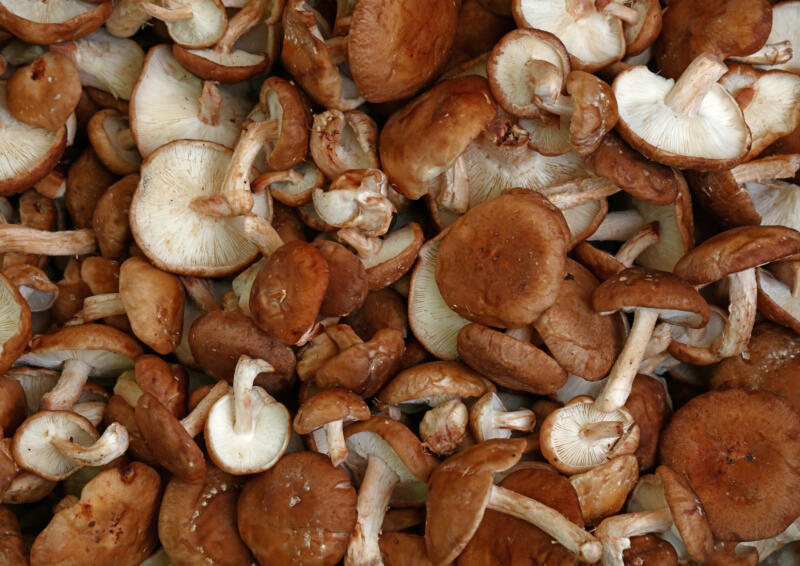
Shiitake mushrooms are renowned for their health benefits and nutritional composition.
They boast a high protein content of 2.2g per 3.5oz (100g) serving and contain 17 different amino acids.
Their flavorful taste and meaty texture make Shiitake mushrooms a popular meat substitute.
Try using them as a replacement for beef in stir-fries, stews, and other dishes to boost your protein intake while enjoying their unique texture and flavor.
6. Cremini (Agaricus bisporus)
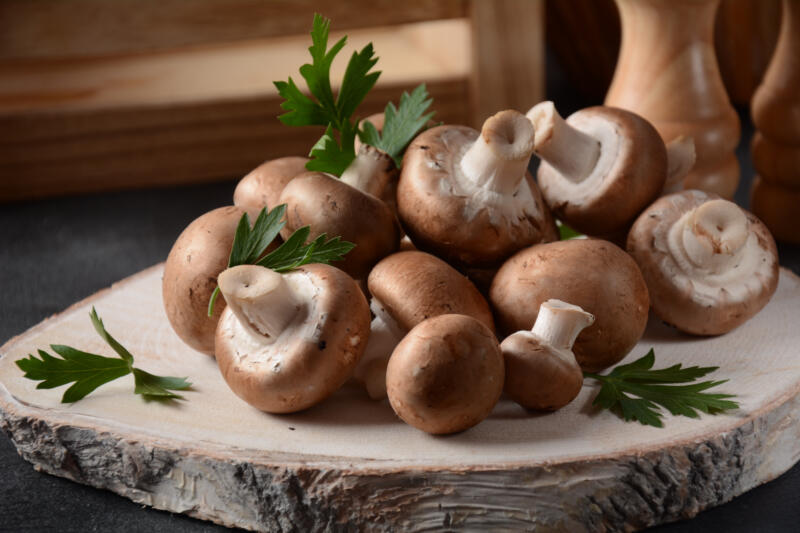
Cremini or brown mushrooms, often referred to as ‘baby bellas,’ are a smaller, younger version of the Portobello.
This means that when white button mushrooms mature, they become cremini mushrooms, which later grow into the well-known Portobellos.
Cremini mushrooms are nutritionally rich, offering a variety of benefits.
Notably, a 3.5oz (100g) serving of these mushrooms provides approximately 2.5g of protein.
With a sturdy texture and subtle taste, they can be adaptably used in an array of recipes, ranging from salads to sautés.
Nutritional Benefits
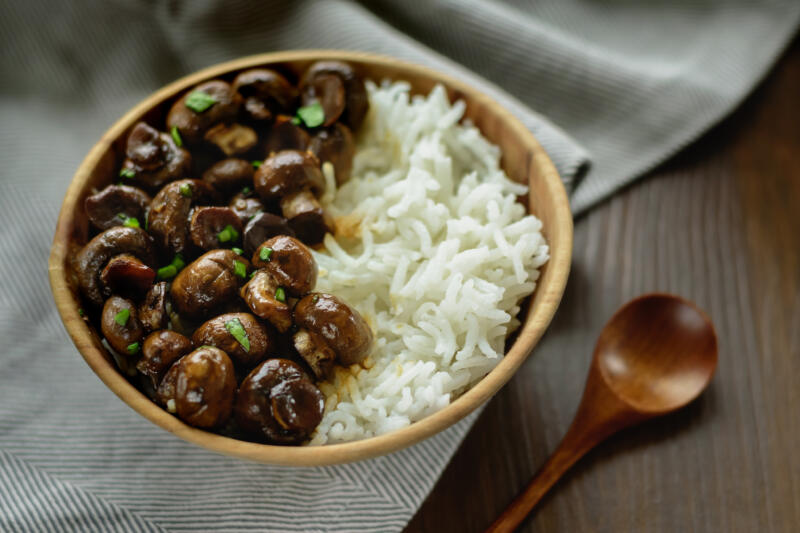
High protein mushrooms are more than just a source of protein. They’re packed with a variety of nutrients that contribute to our overall health and wellbeing.
Essential Amino Acids
Mushrooms, particularly those high in protein, are a source of essential amino acids that our bodies can’t produce on their own, so we must get them from our diet.
Amino acids are the building blocks of proteins, which are necessary for constructing and repairing body tissues, including muscles.
They also play a vital role in supporting immune function, as they are needed for the production of antibodies, which help the body fight off infections and diseases.
Additionally, some essential amino acids are involved in other important processes, such as regulating mood and sleep.
Vitamin B5 (Pantothenic Acid)
Have you heard of B5 before? Vitamin B5, also known as Pantothenic acid, is another nutrient found in mushrooms.
This vitamin plays a crucial role in our bodies, helping to convert food into energy and aiding in the production of red blood cells.
High protein mushrooms, such as white buttons, cremini, and Shiitake, are good sources of Vitamin B5, contributing to our overall health.
Bioactive Compounds
Mushrooms are also rich in bioactive compounds, which include polysaccharides, triterpenoids, phenolic and flavonoid compounds, among others.
They collectively contribute to a range of health benefits, such as immune modulation, anti-inflammatory effects, and anti-tumor properties.
They help control pathogenic microbes and diseases. For instance, some mushroom compounds have shown binding affinity to coronavirus proteins, offering potential therapeutic benefits.
The specific types and amounts of these beneficial compounds can vary depending on the mushroom species and preparation methods.
Dietary Fiber
Mushrooms rich in protein also provide a valuable amount of dietary fiber, crucial for digestive well-being.
This fiber facilitates digestion by bulking up one’s diet and ensuring regular bowel activity.
Moreover, fiber imparts a sense of satiety, which can aid in weight management.
Some high protein mushrooms such as shiitake, maitake, and oysters have been linked to cardiovascular disease prevention due to their fiber and antioxidant content.
Functional Foods
As health awareness grows in modern society, the notion of functional foods is rising in significance. These foods deliver health perks that extend beyond basic nutrition.
High protein mushrooms can certainly be classified as functional foods due to their rich nutritional profile and additional health benefits.
These mushrooms are not only packed with protein but also contain fiber, antioxidants, vitamins, and minerals.
Incorporating Mushrooms in Your Diet
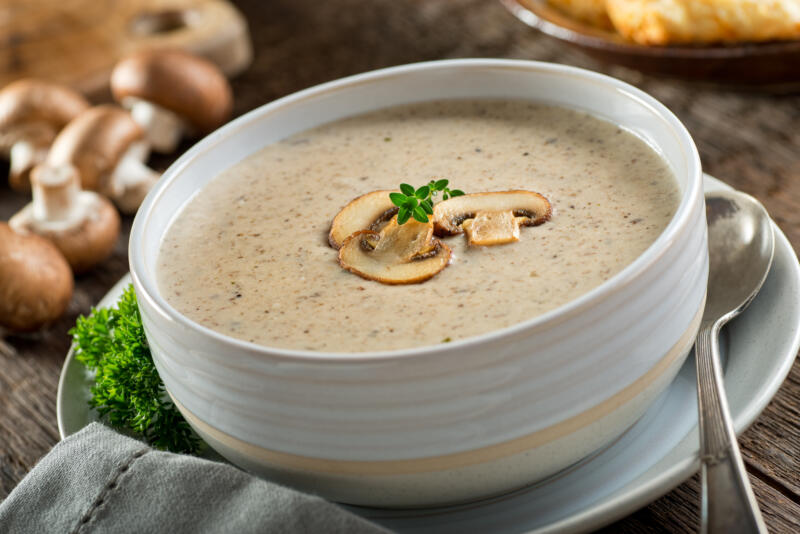
Incorporating high protein mushrooms into your daily meals can be a delicious and nutritious endeavor.
Whether you’re sautéing them for a stir-fry, grilling them for a hearty sandwich, or adding them to a savory soup, there are countless ways to enjoy these protein-packed fungi.
For a simple and delicious meal, try a Portobello mushroom burger.
Grill a large Portobello cap, season it with your favorite spices, and serve it on a whole-grain bun with fresh veggies.
Or, for a comforting dinner, make a Shiitake mushroom soup.
Sauté Shiitake mushrooms with onions and garlic, add vegetable broth and your choice of vegetables and let it simmer to perfection.
Conclusion
Mushrooms, with their high protein content and rich nutritional profile, offer numerous advantages as a protein source, especially for those following plant-based diets.
Their special texture and taste make them a viable candidate for producing meat-like alternatives.
With their array of bioactive compounds, mushrooms are not merely a gastronomic pleasure but a functional food that promotes health and wellbeing.
We hope this article has provided you with valuable insights into the world of mushrooms.
If you have any questions or comments, feel free to share them below.